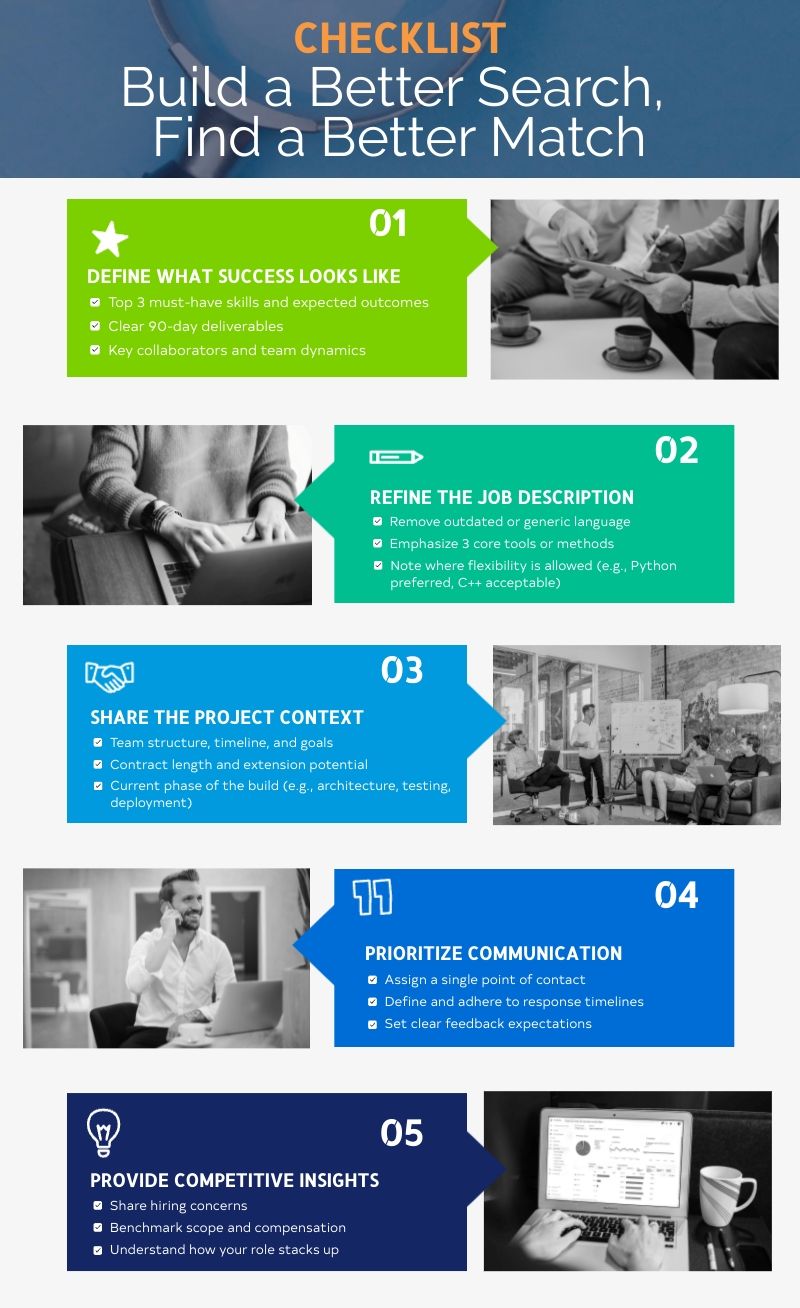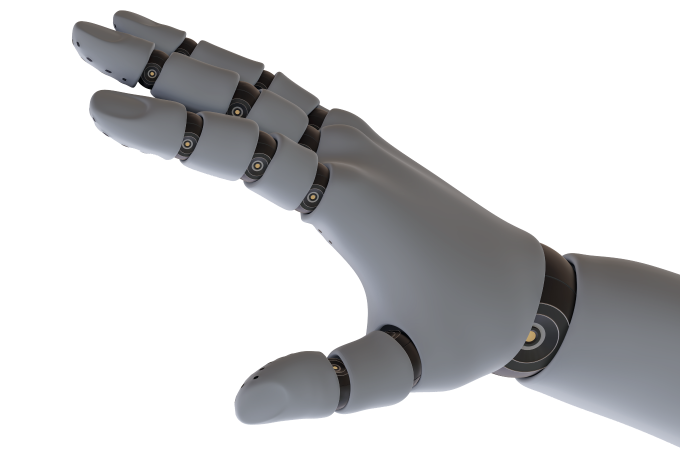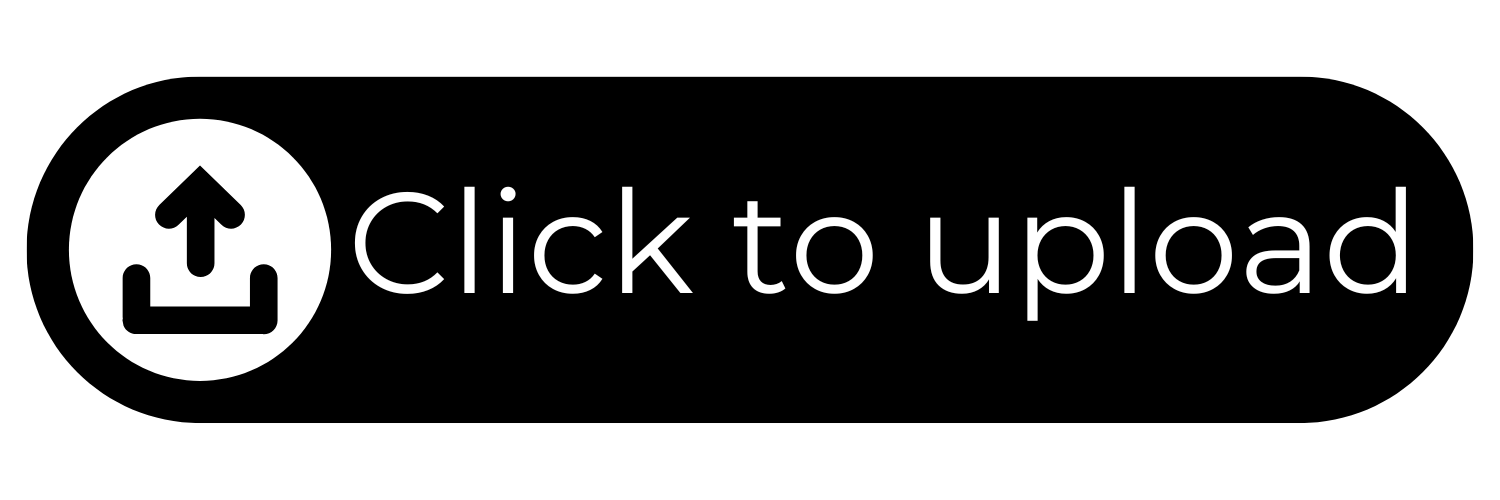From Piles of Resumes to Precise Matches
Turning Searches into Stronger Hiring Outcome

What the Resume Flood Is Really Telling You
In a recent LinkedIn poll, we asked what slows down hiring the most. Half of the respondents pointed to resumes that lacked a true skill match. That result says a lot, especially if you’ve ever sorted through pages of applicants who, on paper, seem qualified but ultimately miss the mark.
That kind of mismatch is often rooted in how a search begins. Resumes are shaped by job descriptions, and job descriptions are shaped by what information you share up front. When the starting details are too vague or too broad, even great engineers struggle to align with the expectations, leaving both sides uncertain about fit, performance, and next steps. The outcome? You get volume, not value.
Below, we break down five specific ways to shift from resume overload to better alignment, stronger submissions, and faster deployments. Each point is designed to help you tune your search from the start, whether you’ve been building teams for years or you’re navigating the market for the first time.
1. Define What Success Looks Like
Before a job description is written or a search begins, take the time to define what success actually means for the role. This goes beyond listing responsibilities. It is about setting clear, outcome-focused expectations.
What are the top three results this engineer should deliver in the first 90 days? Which skills are must-haves, and which can be learned on the job? Are you looking for someone to maintain systems or to rebuild them from the ground up?
Getting clarity here isn’t just helpful for us, it’s essential for you. It helps differentiate between the nice-to-haves and the non-negotiables. It gives candidates a real sense of what success looks like, and it keeps your internal team aligned when reviewing resumes. The clearer the outcomes, the more effectively the search can be calibrated.
2. Refine the Job Description
A job description should not be a catch-all list of tasks. It should reflect the current needs of your project, the tools your team actually uses, and the type of contribution you expect from the engineer.
Outdated or recycled specs do more harm than good. They attract candidates who may check generic boxes but fall short when it comes to real-world fit. Precise language helps here. Instead of “experience with embedded systems,” call out specific protocols or toolchains. Instead of listing every language under the sun, focus on the ones that are essential.
Leave room for flexibility, too. If C++ is preferred but Python is acceptable, say so. It opens your pipeline to talented engineers who may bring a fresh approach without compromising technical integrity. Our role is to help translate the intent behind your needs. The clearer the description, the faster we can do that.
3. Share Project Context
Even the best job description can fall flat without context. Candidates want to understand where they fit into the bigger picture. That includes details like team size, project goals, system architecture, and how their work connects to delivery timelines.
Will they be working independently or as part of a collaborative build? Is this a project that’s midway through or launching from scratch? What are the expectations around contract length, possible extensions, or conversion to full-time?
When you share that context early, you reduce surprises later. It allows the role to be presented more clearly, sets accurate expectations, and encourages sustained interest from those best aligned.
4. Prioritize Communication
A clear discovery phase makes a big difference, but so does ongoing communication throughout the process. We see the strongest hiring outcomes when a single point of contact is identified, expectations for feedback timelines are established, and the review process stays collaborative.
If we know we can get feedback within 24 or 48 hours, we can keep momentum high and candidates engaged. When those communication windows slip, so does candidate interest.
Consistency builds trust. It ensures qualified engineers stay engaged and your internal team stays on pace. We can help coordinate all the moving parts, but we do our best work when communication flows both ways.
5. Provide Competitive Insights
The hiring landscape shifts constantly. Engineers with highly sought-after skillsets know their value, and they move fast. That’s why compensation and scope should be grounded in real market data, not assumptions.
Share your concerns about hiring in your domain. Let us know what you are seeing in your competitors’ postings. We’ll provide insights on how your opportunity stacks up and where adjustments could strengthen your position. This includes salary benchmarks, flexibility expectations, and project visibility.
You don’t have to guess what the market wants; we can show you. That intelligence doesn’t just help you secure the right engineer. It gives you the insight to align future searches with real business outcomes.

Ready to Start Smarter?
When you define success, share context, and open communication, the search becomes something different. It becomes intentional, aligned, and fast. You get more than resumes. You get meaningful results, not missed opportunities.
If you're ready to see what happens when precision meets experience, connect with our account managers today.



